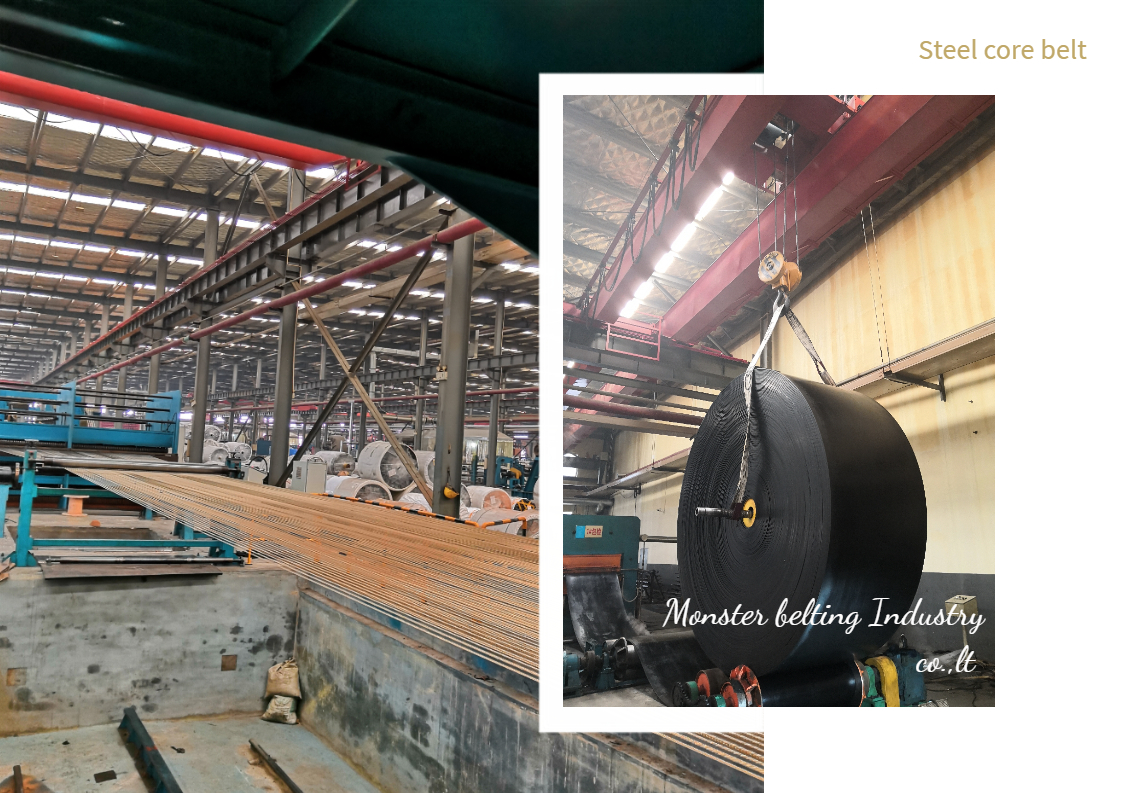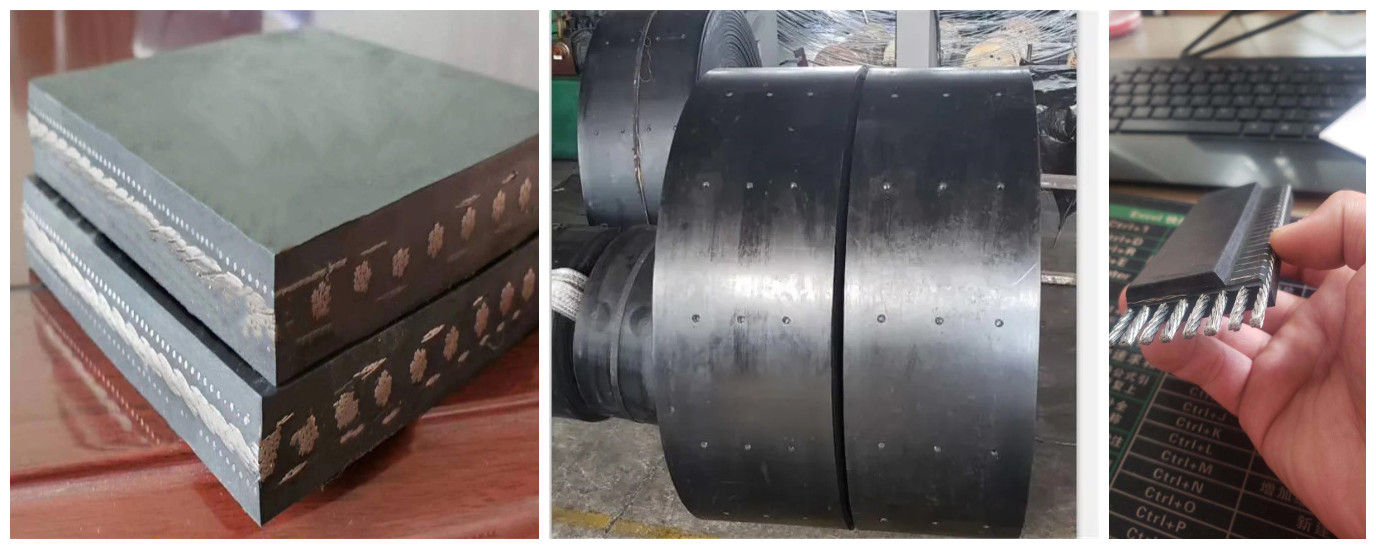ST2000 steel cord rubber conveyor belt for port and stone plant
Advantage
steel cord conveyor belt Ability to withstand high tensile strength, low elongation, impact resistance and good trough ability.
Suitable for long-distance, large-capacity and high speed transportation of materials.
Application
Commonly used in cement industry, coal mines, quarries, minings, electric power plants, metallurgic industry, ports and chemical industry, etc.
Characteristic
Better flexure than the multi-ply fabric belt with the same strength.
Smaller diameter for the required pulley.
Using galvanized open steel cords and rubber materials provides good adhesion properties, and good bond between the steel cord and core rubber.
Results in a high impact resistance and durable belt.
Using advanced manufacturing techniques, the steel cords are evenly arranged at the same tension.
Smoothening belt running and increasing drift avoidance.
One or two layers of anti-tear materials are added to the products according to customer’s special request in order to decrease the possibilities of tear within longitudinal range.
 Steel cord conveyor belt specications
Steel cord conveyor belt specications
| Steel Cord Types: Conventional Fire Resistance Resistance Heat Resistance Abrasion Resistance Heat & Abrasion Resistance Acid, Alkali & Oil Resistance Cold Resistance Ozone Resistance | DIN 22131 | ST | ST | ST | ST | ST | ST | ST | ST | ST | ST | ST | |
| 1000 | 1250 | 1600 | 2000 | 2500 | 3150 | 3500 | 4000 | 4500 | 5000 | 5400 | |||
| Tensile Strength (MPa) | 1000 | 1250 | 1600 | 2000 | 2500 | 3150 | 3500 | 4000 | 4500 | 5000 | 5400 | ||
| >Max DIa. Of Cord(mm) | 4.1 | 4.9 | 5.6 | 5.6 | 7.2 | 8.1 | 8.6 | 8.9 | 9.7 | 10.9 | 11.3 | ||
| Pitch Of Cord (mm) | 12 | 14 | 15 | 12 | 15 | 15 | 15 | 15 | 16 | 17 | 17 | ||
| >Top Rubber Cover Thickness(mm) | 4 | 4 | 4 | 4 | 5 | 5.5 | 6.5 | 7 | 7.5 | 8 | 9 | ||
| Bottom Rubber Cover Thickness(mm) | 4 | 4 | 4 | 4 | 5 | 5.5 | 6.5 | 7 | 7.5 | 8 | 9 | ||
| Width(mm) | Tolerance(mm) | Cord Number | |||||||||||
| 500 | +5 | 39 | 34 | – | – | – | – | – | – | – | – | – | |
| 650 | +7 | 51 | 44 | – | – | – | – | – | – | – | – | – | |
| 800 | +8 | 64 | 55 | 50 | 64 | – | – | – | – | – | – | – | |
| 1000 | +10 | 81 | 69 | 64 | 81 | 64 | 64 | 64 | 64 | 59 | 55 | 55 | |
| 1200 | +10 | 97 | 84 | 77 | 97 | 77 | 77 | 77 | 77 | 71 | 66 | 66 | |
| 1400 | +12 | 114 | 98 | 90 | 114 | 90 | 90 | 90 | 90 | 84 | 78 | 78 | |
| 1600 | +12 | 131 | 112 | 104 | 131 | 104 | 104 | 104 | 104 | 96 | 90 | 90 | |
| 1800 | +14 | 147 | 127 | 117 | 147 | 117 | 117 | 117 | 117 | 109 | 102 | 102 | |
| 2000 | +14 | 164 | 141 | 130 | 164 | 130 | 130 | 130 | 130 | 121 | 113 | 113 | |
| 2200 | +15 | 181 | 155 | 144 | 181 | 144 | 144 | 144 | 144 | 134 | 125 | 125 | |
| Min Pulley DIa. (mm) | 800 | 800 | 1000 | 1000 | 1250 | 1400 | 1600 | 1600 | 1800 | 2000 | 2000 | ||
Rubber Cover Properties and Grade
| Test Items | Properties Index | |||
| DIN 22131 | ||||
| W | X | Y | ||
| Tensile Strength | MPa | 18 | 25 | 20 |
| Elongation at Break | % | 400 | 450 | 400 |
| Change Rate (Strength Change Rate) of Tensile | % | -25 ~ +25 | -25 ~ +25 | -25 ~ +25 |
| Abrasion | mm3 | 90 | 120 | 150 |


